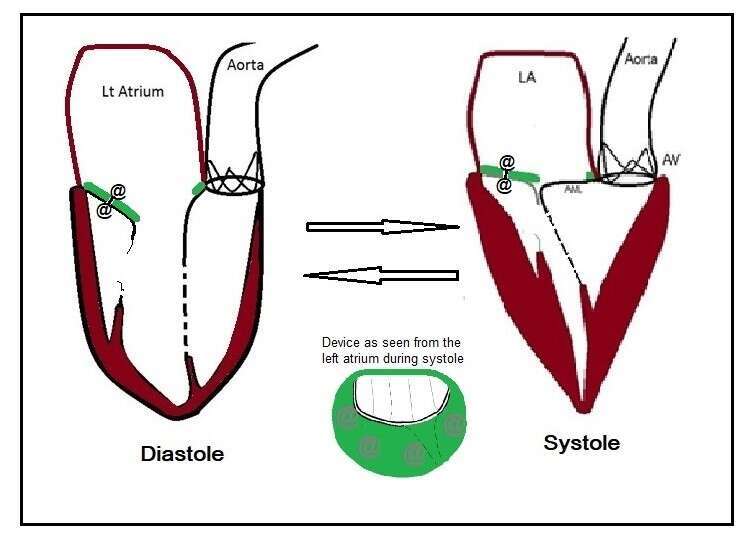
Mitral Add-on: A Novel Approach to Percutaneous Posterior Leaflet Repair
Introduction: The majority of the posterior leaflet segments in a regurgitant mitral valve are still well suspended: The effective area of severe MR jet has PISA of ~ 8 mm, 0.7 cm2, vs. ~2-3+ cm2 of all the posterior leaflet segments together. Our approach is to employ all the atrial aspect of the well suspended posterior leaflet segments and the base of the anterior leaflet as a docking surface for a device that covers them. The flailing segments will thus get a well-supported roof that prevents further flail and MR.
Device and system: Our percutaneous system is comprised of:
1) A flexible D-shape device, the size of the whole atrial aspect of the mitral valve, with a large fenestration above the anterior mitral leaflet atrial aspect.
2) Coupling Elements, elastic/ flexible with large contact area on the device and mitral leaflet surfaces, anchor the device to the well suspended leaflet segments. No annular docking.
The ventricular margins of the posterior leaflet are not jeopardize by the repair, and provide coaptation surface to the anterior leaflet.
3) Deployment and attachment tools.
Current stage of development: The device and system are in the prototype stage. Proof of concept was achieved in pre-clinical studies on ex-vivo hearts and live animals.
Conclusion: This TMVR system employs a novel approach: recruiting and stabilizing all the atrial aspects of the posterior leaflet, the well suspended and the flailing segments together. It was proven to effectively restrain /prevent further flail and MR in the porcine model.

Powered by Eventact EMS